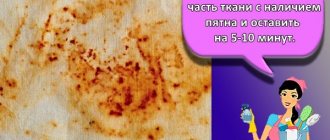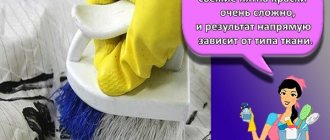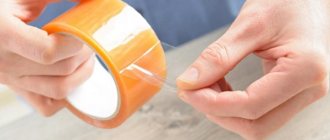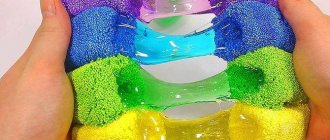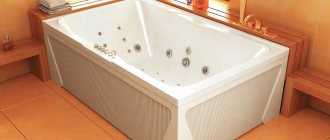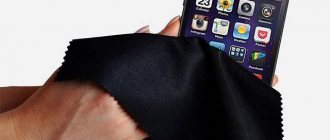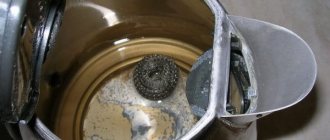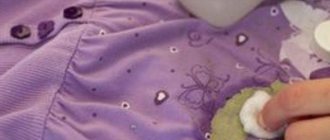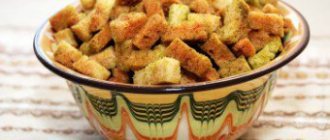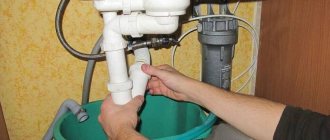Citric acid - removing fresh stains
If rust has recently formed on the surface of plumbing fixtures, you can deal with it using citric acid, which every housewife has in stock.
You will need 2-3 bags of lemon juice and a brush necessary for cleaning. Under no circumstances should you use metal brushes and sponges, as they lead to the formation of scratches and pores, in which difficult-to-remove contaminants will accumulate in the future.
- In order to clean rust in the toilet, you need to remove water from it if possible and pour citric acid into it.
- Then you need to close the lid and leave the product for 3-4 hours. It may take longer to remove stubborn rust.
- After this time, it is necessary to wash off the citric acid and clean the plumbing fixtures with a brush to remove the remaining plaque.
Citric acid with vinegar - a simple way to restore cleanliness
At home, you can easily prepare an effective toilet rust remover. To do this you will need citric acid and vinegar.
- Pour 1/3 cup of table vinegar into a spray bottle.
- Two bags of lemon juice must be poured into a dry toilet.
- Then you need to spray vinegar over its surface. The reaction of these two substances will cause the citric acid powder to foam.
- The mixture must be left on the walls of the plumbing for 4 hours. During this time, the rusty coating will become soft and can be easily removed with a brush.
Baking soda and vinegar - two cleaning methods
Using these substances, you can quickly get rid of rusty stains in the toilet bowl. There are two ways to proceed.
- Bring 1 cup of table vinegar to a boil. While it is still hot, add baking soda. Apply the hot mixture to areas with rust. After 2-3 hours, rinse the surface of the toilet with running water.
- Pour a small amount of water into the baking soda and mix thoroughly to form a homogeneous paste. Apply the mixture to the contaminated surface and leave for an hour. Pour vinegar into a spray bottle and wet the walls of the plumbing with it. When the chemical reaction is complete and the mixture stops fizzing, flush the water out of the tank.
In both cases, you can finally treat the surface of the toilet bowl with a soap solution. Any liquid soap is suitable for its preparation.
Electrolyte - removing stubborn stains
If the walls of the plumbing have lost their whiteness, an electrolyte will help correct the situation. The substance, which is an essential component of a car battery, contains sulfuric acid. It actively interacts with oxides and salts.
Since the electrolyte is poisonous, do not neglect protective accessories during cleaning. Not only will you need gloves and a face mask, but also a respirator. It is necessary to protect the respiratory system not only because of the unpleasant odor, but also because inhaling the smallest particles of electrolyte is dangerous to health.
The composition applied to contaminated areas instantly triggers a chemical reaction. The electrolyte is washed off after 15 minutes; if necessary, rust residues are removed with a brush.
Since the cleaning composition is toxic, it is recommended to use it only if the layer of rusty deposits is very large and there is no money to purchase high-quality household chemicals. You should not use electrolyte if the toilet is connected to the sewerage system with polypropylene pipes.
How to remove a yellow line in the toilet
On a snow-white surface, rusty streaks may form in places where water comes into contact with the enamel, for example, if the tank is faulty and the flow runs constantly. But even when everything is fine with it, you are not protected from the yellow stripe that eats into the enamel, because there are many parts in the tank that are susceptible to corrosion.
If there is already such a yellow stripe in the toilet, you will have to make great physical efforts to remove it. To do this, you will need commercial detergents and a little patience. If you don’t want to waste your time and energy on this, then you can follow the most radical method - buy acids, for example, orthophosphoric or oxalic acid and wipe off the dirt.
Important : you should use acids if nothing else helps. Before using it, you should protect your skin and mucous membranes by wearing a respirator, goggles and thick rubber gloves.
Domestos - an effective remedy for rust and plaque
Such household chemicals make it easy to clean the toilet bowl from red stains and water deposits. The product contains no chlorine, and the main substance that has a cleansing effect is hydrochloric acid. Unlike alkaline compounds, acid-based gel not only helps fight rust, but also kills bacteria.
The cleaner works even under water. Thanks to its thick consistency, the gel is consumed economically and is evenly distributed over the surface during cleaning.
To remove rust from the toilet and disinfect it, apply the product to the surface, not forgetting the areas under the rim, and leave for 30 minutes. Then clean the plumbing fixtures with a brush and rinse with water.
Folk remedies for cleaning rust stains
To clean a toilet bowl from rust, you don’t have to buy expensive industrial chemicals. The funds that are found in every home will give a positive result without a hit to the family budget.
Read about the use of folk remedies to get rid of rust on the toilet in this article.
How to remove rust with baking soda and vinegar?
The components found in every kitchen are universal. Often used to clean various surfaces due to their properties:
- baking soda (lye) is an effective bleach that absorbs foreign odors;
- vinegar (acid) – destroys limescale, removes rust, various deposits, neutralizes unpleasant odors, disinfects.
Step-by-step instructions for use:
- Sprinkle a thick layer of baking soda onto the toilet bowl.
- Treat areas with increased contamination with a dampened sponge.
- Leave for 30-40 minutes.
- Pour vinegar (100 g) into a spray bottle and spray on a surface covered with soda.
- As soon as the reaction begins (excessive foaming with hissing), clean the toilet with a brush.
Vinegar and soda will not only quickly remove rust, they will return the whiteness of the earthenware surface and disinfect it.
Instead of table vinegar, you can use vinegar essence, but only in diluted form. For 100 g of water you need only 2 tbsp. spoons of concentrate.
How to get rid of streaks using ammonia and hydrogen peroxide?
Inexpensive components can be purchased at every pharmacy. To clean you need:
- prepare a solution of ammonia and peroxide in a ratio of 1 to 20;
- moisten a sponge in the resulting liquid and treat areas with rust;
- leave for several hours;
- clean the bowl with a brush;
- rinse with water.
For deep cleaning, it is better to apply the solution at night.
How to wash with White?
A liquid that contains chlorine and alkali easily removes rust, plaque, and disinfects the surface of the toilet, but is fundamentally not suitable for the flush cistern.
How to use:
- Remove water from the toilet; the surface must be dry.
- Using a spray bottle, spray the product onto the toilet bowl, paying attention to hard-to-reach areas.
- Close the toilet lid and wait 20 minutes.
- Treat the surface with a brush.
- Flush the water several times.
Chlorine vapors are harmful to the respiratory tract. A respirator and good room ventilation will help avoid harmful effects.
How to clean with a corrosion neutralizer?
A budget product that is sold in hardware or paint stores. The main component is phosphoric acid, which easily removes rust, plaque and other types of contaminants.
Instructions for use:
- pour liquid into a spray bottle;
- spray on the toilet bowl, leave for 5 minutes;
- treat the surface with a brush;
- rinse thoroughly with water.
Do not allow the solution to interact with plumbing fixtures for a long time; the active substance may damage the coating.
How to remove traces of Coca-Cola?
An effective way to combat metal corrosion products is a popular drink. It is enough to pour 1-1.5 liters of liquid into the toilet and tank for 1 hour and flush the water several times. There will be no trace of rust left. A packet of citric acid will help enhance the effectiveness of the product.
Cillit BANG - quick rust removal
The advantage of liquid detergent is that it does not scratch the surface of the plumbing. Cillit BANG gel restores the original cleanliness of treated surfaces, removing plaque and red stains from hard water. Using an acidic detergent, you can wash off rust in the toilet and restore the shine of chrome parts.
Concentrated chemicals can corrode the chrome coating; before use, it is better to test the effect of the product on a small area.
- To clean plumbing, you need to apply the gel to the dirty area for just 1 minute.
- After this time, you should rinse the treated area and wipe it with a napkin.
- If the rusty coating is very persistent and is not removed the first time, the procedure must be repeated.
- Wear gloves when working with aggressive cleaning agents.
- Before cleaning, be sure to read the instructions and precautions.
- Thanks to economical consumption, household chemicals will last for a long time.
Preventing rust in the toilet
In order not to waste energy on eliminating rusty streaks, do not allow them to appear. Plaque formation can be prevented if you regularly resort to preventive measures:
- Clean plumbing fixtures regularly using acidic or alkaline household chemicals.
- Make sure that the tank and pipes are in good working order, do not forget to carry out minor preventative repairs. If water leaks from the tank, red stripes on the earthenware will appear faster and will be much more difficult to deal with.
- Place tablets in the toilet to soften and purify the water. If the latter is too hard or contains impurities with corrosive particles, yellow streaks will regularly appear on the toilet. Poor quality tap water also causes breakdowns in the drainage system.
- Old pipes in which rust accumulates become a common cause of brown stains on earthenware. Replace them with new ones as soon as possible to avoid rupture and further contamination. An updated water supply and drainage system will make plumbing maintenance easier.
- Clean the toilet daily using a toilet brush.
- Do not use the toilet to dispose of food waste or flush soups or broths into it. A greasy film on the walls only accelerates the formation of rust. If you still have to pour food waste down the drain, be sure to go over the surface of the toilet with a brush and flush the water several times.
Caring for plumbing requires daily cleaning procedures. Then you will forever forget about yellow smudges, and the toilet will delight you with a glossy shine.
Even old rust on the toilet can be easily cleaned at home. You should choose the optimal preparation containing acids or alkalis that will dissolve plaque in the shortest possible time. All household chemicals and folk remedies are easy to use and do not require special skills. But do not forget to use gloves and a respirator, especially if the mixtures contain highly concentrated acidic compounds. Remember not only cleanliness, but also safety.
Sarma - powder for cleaning and disinfection
The abrasive agent not only effectively fights rusty deposits, but also eliminates bacteria.
- The powder must be poured onto areas with plaque.
- In damp areas the product immediately changes color to blue.
- It is necessary to thoroughly rub the treated areas with a brush or sponge.
- To wash off the powder, running water is not enough, since its residues will appear as whitish spots after drying.
- After cleaning, rinse the plumbing fixtures with running water and wipe with a cloth.
The advantages of the cleaning product include its suitability for cleaning not only in the toilet and bathroom, but also in the kitchen. These household chemicals remove rust and grease and have a whitening effect. Thanks to its versatility and pleasant rich aroma of freshness, Sarma cleaning powder will definitely find use in the household.
The following video provides additional guidance on how to clean rust in your toilet. Simple tips will help you quickly deal with dirt.
After you have managed to remove the rust from the toilet, you need to take preventive measures to prevent rust stains from appearing again. It is important that the tank does not leak. It is necessary to treat the plumbing fixtures with bleach weekly. You can purchase special tablets that are attached to the toilet or placed in the tank. You should also clean the tank with bleach or vinegar as needed. By following these recommendations, you will no longer have to worry about how to remove rust from your toilet.
How to choose the best toilet cleaner
Cleaning the toilet seems like a simple matter, but in practice it turns out that not everything works out as well as we would like. The specific use of this type of plumbing leads to its accelerated contamination with components such as urinary stone, lime, and rust. Organic residues are a favorable environment for the development of bacteria and microbes, hence the appearance of an unpleasant odor, even if the toilet looks clean on the outside. That is why choosing a product is the number one task for those who want to keep their bathroom in order. And for this you should pay attention to the characteristics of the product.
To maintain cleanliness and hygiene, wipe the toilet every day with an antibacterial wipe.
Release form
The active substance and base can be made in different formats. The principles of chemical action in this case remain almost unchanged, but the specific application depends entirely on this parameter.
- Powder. Typically, such products have an abrasive effect, which is undesirable in the case of expensive enamel-coated products. On the other hand, you can include dietary supplements in dry powder - they will begin to react and affect bacteria and odor when they enter the water.
- Liquid. This form was the most common for all products before the active introduction of thickeners. The most well-known cleaning components - acids and surfactants - have a liquid form, therefore, this form is the most logical for cleaning products. Thanks to its fluidity, the liquid easily penetrates into hard-to-reach places.
- Gel. A liquid fraction to which special thickening components have been added. This is done so that the product does not just flow down the walls, but leaves a significant layer on them. Since most cleaning products need to be applied and then left to sit for a while, this form is ideal for sanitizing the toilet.
- Pressed briquettes. These products were invented so that owners could think less about cleanliness. The briquettes are placed in a tank or in a plastic container and hung on the rim of the toilet bowl. Each time the water is washed off, they act evenly on the surface being treated, slowing down the growth of contamination.
- Spray. Quite a rare form of release. It is used for expensive formulations, as it allows you to use the cleaning agent most economically.
Video - How to keep your toilet clean
Active substance
In order to combat various types of pollution, special substances are used, which most often have a chemical nature of influence:
- Chlorine. An old and proven component. Ruthless to any organic components. Completely disinfects the toilet, destroys germs and bacteria. True, it has its own specific smell.
- Surfactants. Chemical compounds that destroy solid contaminants and disrupt their contact with the surface. Usually a combination of several types is used, for example, cationic, anionic, nonionic and others.
- Acid. Most often, a weak solution of hydrochloric acid is used. This chemical dissolves types of contaminants such as limescale and oxides (i.e. rust). Requires caution when handling due to its aggressiveness.
- Alkali. Sometimes used to clear clogged toilet bowls from organic deposits. In the presence of water, it reacts actively with the rapid release of heat, destroying textured contaminants. Requires rinsing with water after use.
